 While colorful tulips and sunny daffodils signal Spring here in the Northwest, I feel the season most truly in the lowland forests of western Oregon and Washington. Instead of tidy beds of cheerful flowering bulbs, the springtime forest here is a messy, wild profusion of textures and shapes.
While colorful tulips and sunny daffodils signal Spring here in the Northwest, I feel the season most truly in the lowland forests of western Oregon and Washington. Instead of tidy beds of cheerful flowering bulbs, the springtime forest here is a messy, wild profusion of textures and shapes. It’s splendid.
Spring is the burst of fresh, vivid green that engulfs the forest understory as vine maples and other native plants leaf out and blossom. I see Spring in unfurling sword fern fronds, standing erect like snakes entranced by a charmer, and in delicate pink bleeding hearts quivering in the breeze, spread over the forest floor.

My sense of the seasons no doubt started during many hours playing in the woods as a kid in east Multnomah County and at summer camp in the Cascade foothills. Back then there weren’t as many subdivisions, and suburban children roamed outside unsupervised, without fear of abduction or worse.
To us kids, stinging nettles were an annoyance and a weapon against neighborhood bullies, not the darling of foodies out foraging for wild edibles today. Clover-like wood sorrel growing beside our stream was a tart but refreshing snack. Huckleberries were awesome, salmonberries were sorta tasty, but thimbleberries were dry and yucky.

In the same way that muscle memory develops from repeated use, spending significant time in a place imprints us in ways we don’t realize until something seems amiss. When I slept under the stars in the Southern Hemisphere, I recognized that the night sky was….unrecognizable, different. I get the same intuitive reaction when I see plants growing in the forest that just aren’t right and shouldn’t be there. Sadly, I see more invasive and non-native plants in Northwest forests than I did as a kid. Can you pick the baddie out of the lineup below?






I’m concerned that kids today aren’t playing in the woods or elsewhere outside enough and hence not developing an intuitive sense of place within their local ecosystems. We need to grow and nurture knowledgeable little environmentalists through three-dimensional, direct experience, not primarily through book or Internet learning.
Fortunately there are some wonderful organizations focusing on environmental education for kids here in the Northwest, like the North Cascades Institute in the North Cascades, IslandWood on Bainbridge Island, and the Outdoor School program in Oregon’s Multnomah County.
 So get on outside with your kids (or your leashed dog, friends, whomever) for a walk in some woods near where you live—wherever you live. With a late spring this year, there’s still time to see Oregon grape, salal, salmonberries, and more native plants in bloom west of the Cascades. (It's a little too late for my favorite, trillium.) Test yourself to see how many you can identify, or whether any look out of place. King County in Washington has a good online native plant guide. The Audubon Society has some good pocket guides.
So get on outside with your kids (or your leashed dog, friends, whomever) for a walk in some woods near where you live—wherever you live. With a late spring this year, there’s still time to see Oregon grape, salal, salmonberries, and more native plants in bloom west of the Cascades. (It's a little too late for my favorite, trillium.) Test yourself to see how many you can identify, or whether any look out of place. King County in Washington has a good online native plant guide. The Audubon Society has some good pocket guides. Or simply revel in the freshness of a native Northwest springtime.
When You Go

The photos with this blog post were all taken in Carkeek Park near my home in north Seattle. Woodlands are abundant and easily accessible throughout the Northwest. In the Seattle area, try Seward Park (the only remaining remnant of old growth forest in the city), Schmitz Park in West Seattle, Discovery Park, or St. Edwards Park in Juanita. In Portland, try extensive Forest Park above downtown.
Anywhere else you suggest? Leave a comment below!








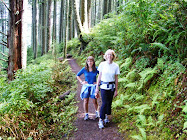

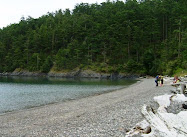
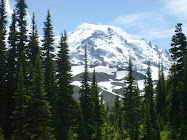



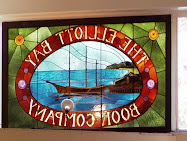
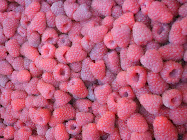
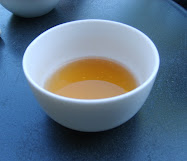
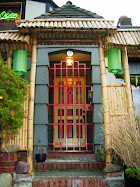



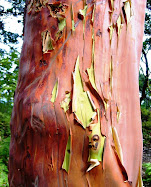

9 comments:
So today I took the 33 instead of the 24 and ended up walking through Discovery Park. I usually run through the park in the morning but this was a chance to stroll in bright sunshine. I saw some of the beautiful greenery Jill points out in her blog. But what struck me most was the incredible green of it all. It's spring green, lighter and fresher than green in anytime of the year. Good job catching the green, Jill!
Spring in the PNW is truly magical. It's a bit cold this year, but I have already been enjoying the splashes of color and critter activity.
When I have kids, I look forward to helping them establish a deep connection with nature. It's SO important-- to kids and the world.
And... I actually like the taste of thimbleberries ;)
The pictures were great. I was in the garden last weekend on the island – looked just like it.
Great post. The hike through the woods in my backyard was easy all winter and now I have to swat the plants out of the way- waterleaf, hooker's fairybell, snowberry, indian plum, etc. There's nothing like a northwest forest!
While reading this post, I kept admiring the photos. All that GREEN! And you took them in a city park. I love that.
Ivan, I'm glad there are people like you out there who want to nurture and promote a deep connection with nature, especially with kids. YOu like thimbleberries, huh? Maybe I should give them another try...
Mike, thanks, sounds like you don't need to go to a city park to see nature in all its glory up close, based on the photos I've seen at Slugyard. I had one shot of a slug from my park walk but it was slightly hidden behind a plant.
Kim, yes, so much vivid green in the lowland forests! We're fortunate to have several great forest parks in Seattle (and Portland), thanks!
Is it the 4th photo? Or maybe the first? I have seen these plants my whole life it seems so am not sure I would know which ones were not here "in the beginning."
Thanks for the photos. Kids and I had a lovely walk through the newly expanded Bellevue Botanical Garden on Mother's Day, it was glorious.
love your post@ I especially love thimbleberries and one thing I want to do in my yard is finally install the latest plants I got last fall in a berry patch. I adore the natives--they compete in my heart with the roses.
Yes, it nice to escape in the urban forest or woods from time to time. Schmitz Park also has a small stand of old growth forest. DB
Post a Comment